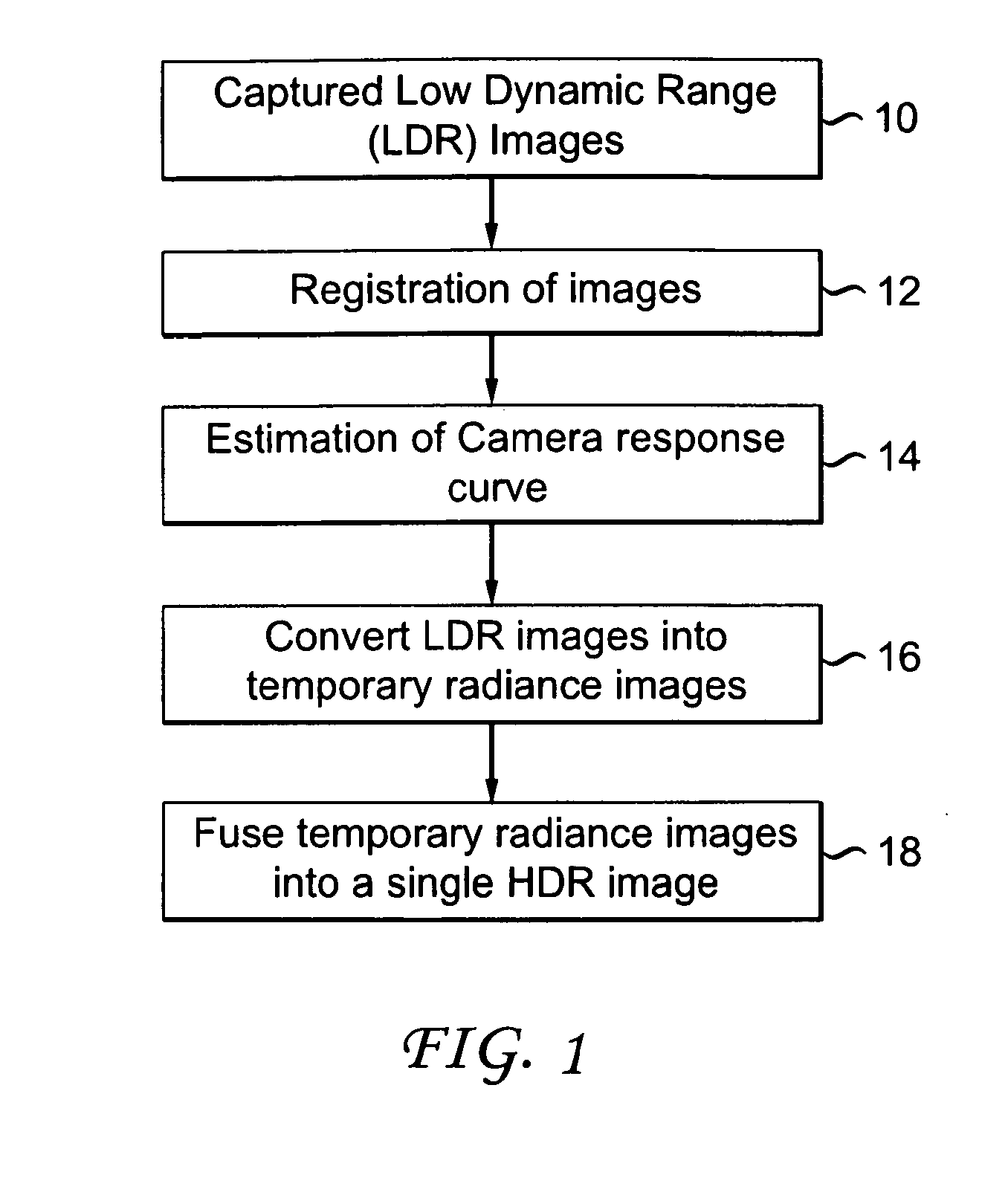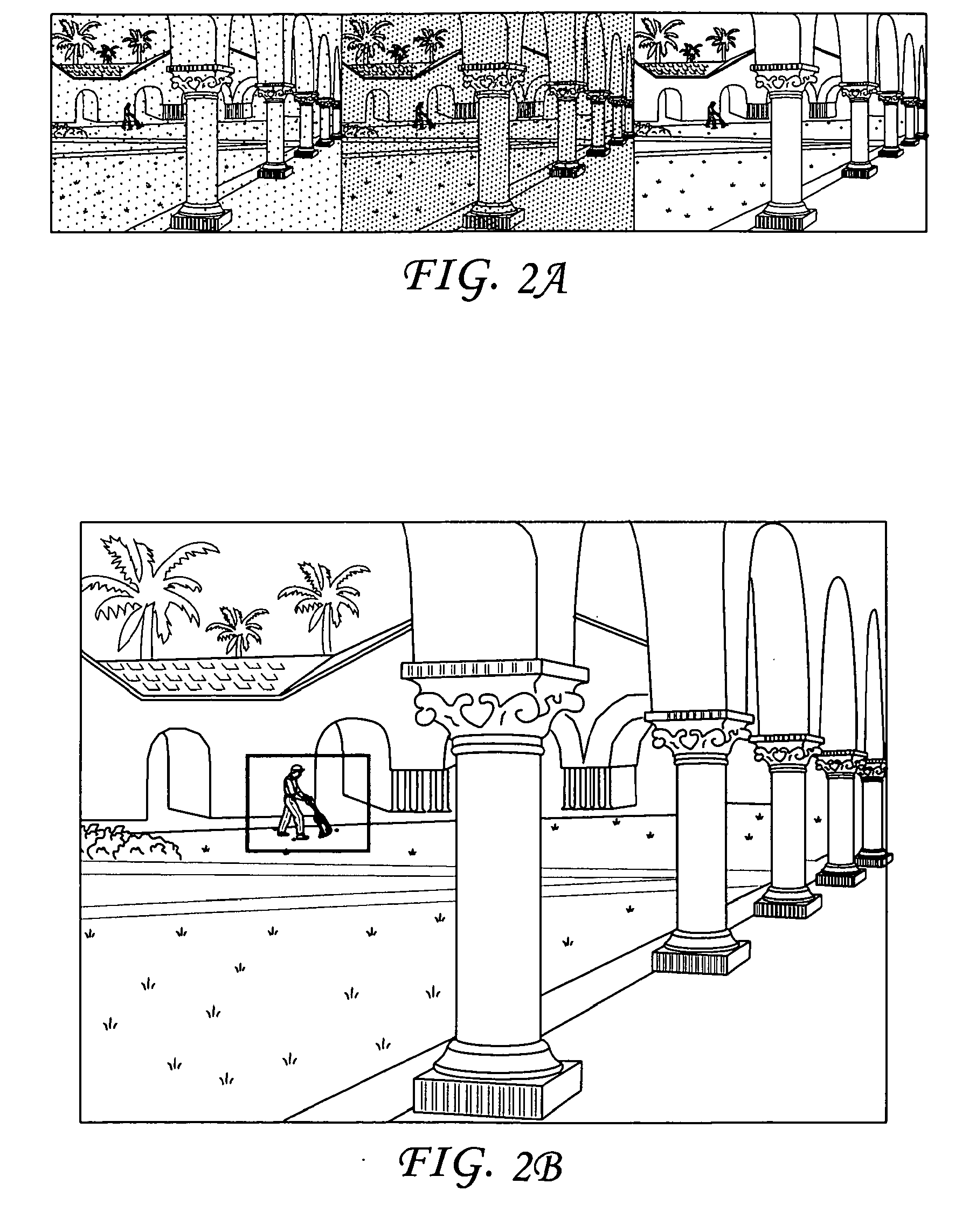High dynamic range (HDR) image synthesis with user input
a high dynamic range and image synthesis technology, applied in image enhancement, television systems, instruments, etc., can solve the problems of inability to always be true, local object motion is absent, and the proportion of pictures can be over-exposed or under-exposed, so as to maximize the image quality of the final high dynamic range and high dynamic range
- Summary
- Abstract
- Description
- Claims
- Application Information
AI Technical Summary
Benefits of technology
Problems solved by technology
Method used
Image
Examples
Embodiment Construction
[0020]The invention will now be described in greater detail with reference to the figures.
[0021]With respect to FIG. 1, the general steps of a high dynamic range (HDR) synthesis according to the invention are described. The first step of a high dynamic range (HDR) synthesis, according to the invention, is to capture several low dynamic range (LDR) images with different exposures at step 10. This is usually done by varying the shutter speed of a camera such that each LDR image captures a specific range of a high dynamic range (HDR) scene. In subsequent step 12, all images are registered, such to eliminate the effect of global motion. In general, the image registration process transforms the LDR images into a one coordinate system in order to compare or integrate the LDR images. This can be done with a Binary Transform Map, for example.
[0022]When there is local motion between selected LDR images, registration between LDR images can still be done effectively, as well as the camera resp...
PUM
 Login to View More
Login to View More Abstract
Description
Claims
Application Information
 Login to View More
Login to View More - R&D
- Intellectual Property
- Life Sciences
- Materials
- Tech Scout
- Unparalleled Data Quality
- Higher Quality Content
- 60% Fewer Hallucinations
Browse by: Latest US Patents, China's latest patents, Technical Efficacy Thesaurus, Application Domain, Technology Topic, Popular Technical Reports.
© 2025 PatSnap. All rights reserved.Legal|Privacy policy|Modern Slavery Act Transparency Statement|Sitemap|About US| Contact US: help@patsnap.com



